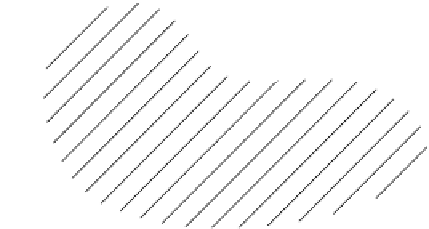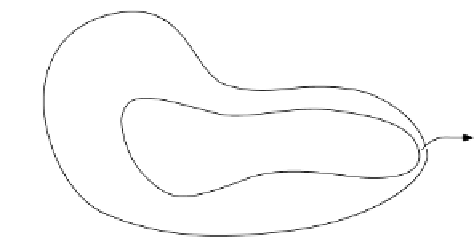Image Processing Reference
In-Depth Information
9
Fig. 5.18.
Border surface of a 3D figure with the unit thickness.
5.6.3 Restoration of a figure
An original input figure is restored exactly from the result of border surface
following. We will present below a concrete form of an algorithm to realize
this.
Algorithm 5.18 (Restoration of a figure).
Input: One of the border voxels of the background (one voxel for each border
surface)
List of border voxels of a figure (output of Algorithm 5.17)
Output: Image
. (A 3D image. A restored binary image is stored after the
execution of the algorithm. Initial values are
0
for all voxels.)
TEMP: Work array (1D, a queue, or a stack)
F
[STEP 1]
(Restoration of a border surface)
Pull out in turn each element of the border voxel list, and put the value
1
into a correspondent voxel of an output image.
[STEP 2]
(Marking of border voxels of the background)
Denote by (
) a starting voxel pair corresponding to each border surface,
which is given as an output of Algorithm 5.17, and perform the following
steps, by starting at the 0-voxel of the above starting voxel pair.
(1) Substitute
x
,
y
1
to a voxel of an output image corresponding to the starting
voxel. Store the coordinate of the starting voxel to a work area TEMP (a
queue or a stack).
(2) Repeat the following (i)
−
(iii) until TEMP becomes empty.
(i) Read out the first element of TEMP.
(ii) Extract all voxels of the surface neighborhood of the value
1
.
(iii) Store coordinate values of extracted voxels to TEMP, and substitute
the value
∼
−
1
to voxels of an output image corresponding to voxels extracted
above.
(3) Go to
[STEP 3]
[STEP 3]
(Restoration of inner voxels and erasure of the mark)



Search WWH ::

Custom Search